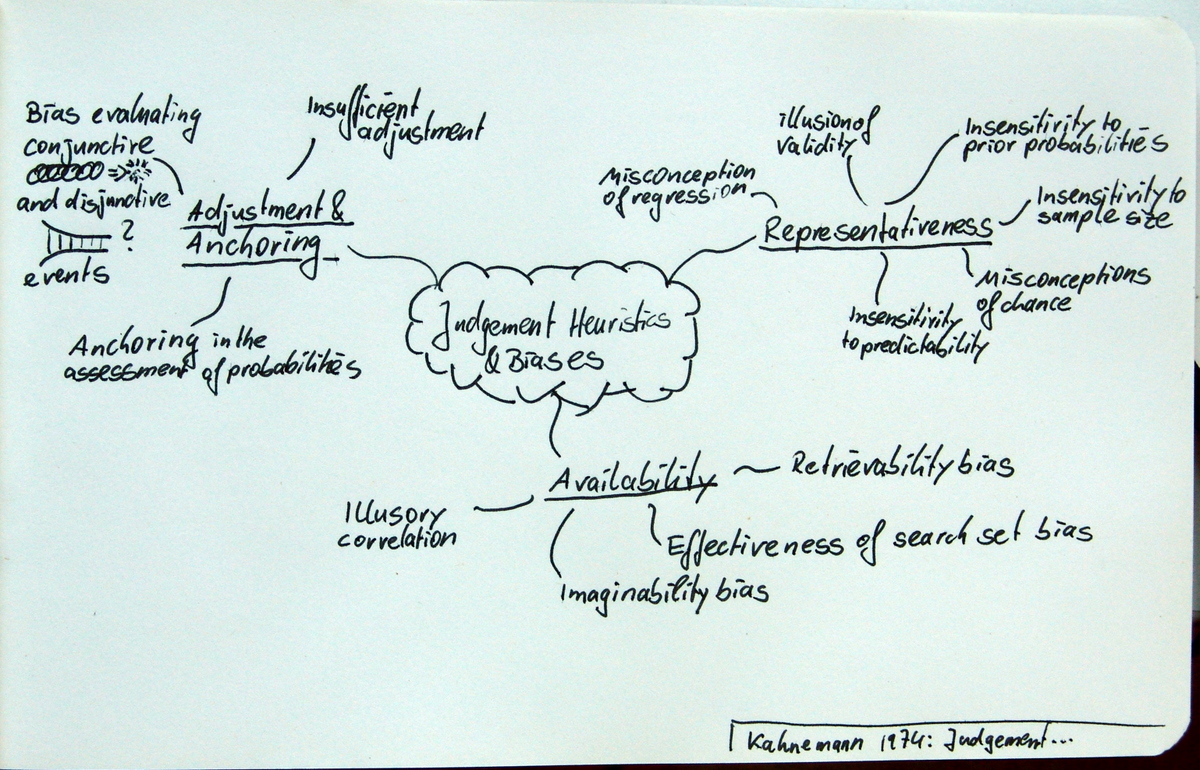
Tversky, Amos; Kahneman, Daniel: Judgment under Uncertainty – Heuristics and Biases; in: Science, Vol. 185 (1974), No. 4157, pp. 1124 – 1131.
DOI: 10.1126/science.185.4157.1124
Biases have evolved to lower our energy needed to make decisions, so they do have quite a natural place in our ape-sized world. Last time I checked wikipedia lists 100 biases, heuristics, and memory errors. Kahneman & Tversky published the first theorization in this article [also published as a part of this book].
Starting with the now classical example of the Gambler’s fallacy the authors explore three judgment heuristics commonly found in science and economic decision making (1) Adjustment & Anchoring, (2) Representativeness, and (3) Availability.
Anchoring & Adjustment (Decisions often rely on a single piece of information) – Kahneman & Tversky show that persons usually guess probabilities more accurately if they have been presented with an anchor. They show that students do overestimate their success when asked at the beginning of a term. This overestimation is slightly corrected if they were given or asked for an anchor, such as ‚what do you think was the grade distribution of your fellow students last term?‘.
Representativeness (Commonality is assumed for similar events or objects) – The authors describe several misconceptions of chance and insensitivities to prior probabilities, sample sizes, and predictability. They also describe the illusion of validity, but the the misconception of regression is the most important of these biases. It is also the reason why we have control groups in double-blind experimental studies.
Regression towards the mean means that in any given random process every sub-group will produce the same distribution [give or take effects of the sample size]. For example, assume that a group has been split into quartiles according to the results after the first run of the random process. The repetition of this process will automatically produce the same distribution in each sub-group, thus the bottom quartile will be better and the top quartile will perform much worse without any effect of a stimuli which has been applied.
Availability (Expected probabilities influenced by the ease of brining examples to mind) – In their classical example for the retrievability bias subjects have been asked to estimate the proportion of words in the English language that start with R or K and the proportion of words that have R or K as a third letter. This bias leads people to underestimate the number of words with R or K as a third letter.